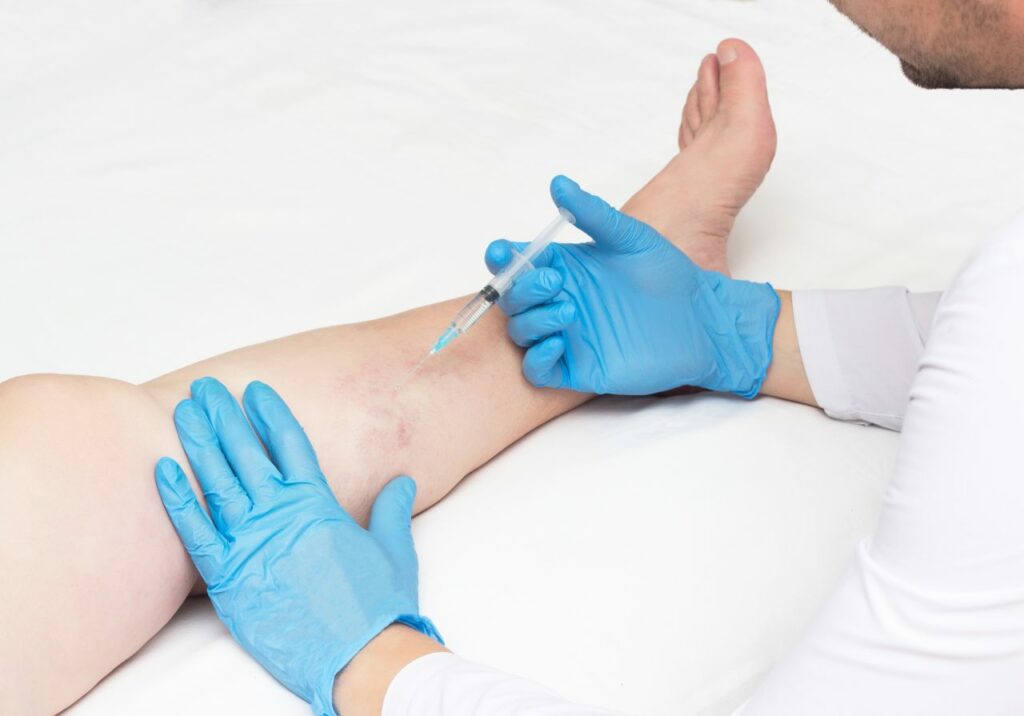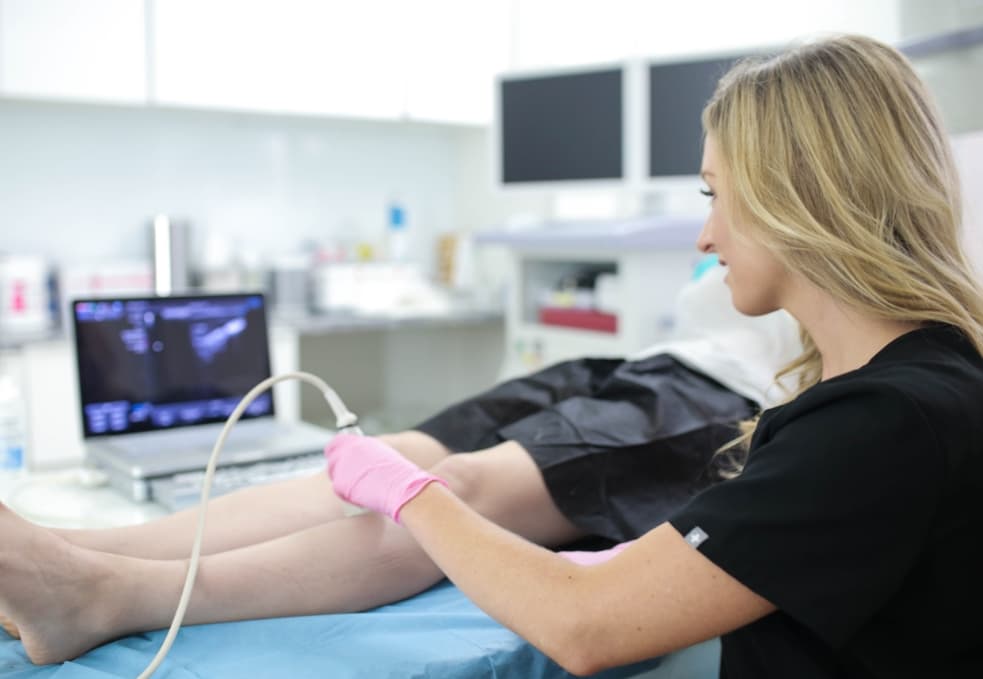What are the side effects of VenaSeal?
VenaSeal is a medical procedure used to treat varicose veins and chronic venous insufficiency. Varicose veins are enlarged veins seen through the skin, often blue or purple. They are a common condition that affects up to 50% of the population. VenaSeal is a minimally invasive procedure that uses a medical adhesive to close the affected veins. It is a newer alternative to traditional vein ablation procedures, which use heat or lasers to destroy the veins.
Like any medical procedure, VenaSeal has the potential for side effects, including:
- Bruising: Bruising is a common side effect of VenaSeal. It is usually mild and goes away within a few weeks.
- Pain: Some people may experience pain after the procedure. This pain is usually mild and can be managed with over-the-counter pain medication.
- Swelling: Swelling is another common side effect of VenaSeal. It is usually mild and goes away within a few weeks.
- Numbness: Some people may experience numbness after the procedure. This is usually temporary and goes away within a few weeks.
- Allergic reaction: There is a small risk of an allergic reaction to the medical adhesive used during the procedure. Symptoms of an allergic reaction include rashes and itching.
Long Island Vein Treatment is a group of state-of-the-art medical centers led by board-certified vein doctors in Long Island. Our vein doctors carefully examine your leg veins, discuss your symptoms and goals, review your medical history, and curate personalized treatment plans. Our considered approach to vein treatment ensures safe and reliable results with minimal side effects and negligible risk of complications.
If you’re in Long Island, you can find our medical centers for vein treatment in West Islip, Jericho, Port Jefferson, or Hampton Bays. Please schedule an appointment at your nearest medical center for vein treatment in Long Island.

What are the long-term side effects of vein ablation?
Vein ablation is a medical procedure used to treat varicose veins. There are several types of vein ablation procedures, including laser and radiofrequency ablation. Like any medical procedure, vein ablation has the potential for side effects. Some of the long-term side effects of vein ablation include:
- Scarring: Some people may develop scarring at the site of the ablation. This is usually minimal and fades over time.
- Pigmentation changes: Some people experience changes in the pigmentation of their skin after vein ablation. This is usually temporary and goes away within a few weeks.
- Recurrence of varicose veins: There is a small risk that the varicose veins will return after vein ablation. This is more likely to happen if the underlying cause of the varicose veins — chronic venous insufficiency — is not addressed.
Is it normal to have pain after VenaSeal?
It is normal to have some pain after VenaSeal. This pain is usually mild and can be managed with over-the-counter pain medication. If the pain is severe or persists for more than a few days, please contact your vein doctor.
Is VenaSeal a safe procedure?
VenaSeal is an extremely safe procedure with a negligible risk of complications. However, as with any medical procedure, there are risks and potential complications. Some of the potential complications of VenaSeal include:
- Infection: There is a small risk of infection at the site of the VenaSeal procedure. Symptoms of infection include fever, redness, and drainage from the site.
- Blood clots: There is a small risk of blood clots after VenaSeal. Blood clots can be serious and cause serious complications, including deep vein thrombosis and pulmonary embolism.
- Allergic reaction: There is a small risk of an allergic reaction to the medical adhesive used during the procedure, which may cause rashes, itching, and breathing problems.
What are the signs of a blood clot after vein ablation?
Blood clots can be a potential complication of vein ablation. Signs of a blood clot include:
- Swelling: Swelling in the leg or ankle can signify a blood clot.
- Pain: Pain in the leg or ankle can be a sign of a blood clot.
- Redness: Redness or discoloration in the leg or ankle can be a sign of a blood clot.
- Warmth: Warmth in the leg or ankle can be a sign of a blood clot.
Please contact your vein doctor if you experience the symptoms of blood clots after ablation.
How does VenaSeal work?
VenaSeal is a minimally invasive procedure that uses a medical adhesive to close the affected veins. The procedure is performed in a vein doctor’s office and takes about an hour. During the procedure, the vein doctor will numb the area and make a small incision in the skin. A thin catheter is inserted into the vein and advanced to the area that needs to be treated. The medical adhesive is injected through the catheter, sealing the vein. The catheter is removed, and the incision is closed with a small bandage.
The vein glue seals the saphenous vein’s walls, turning it into hardened scar tissue that is eventually metabolized by your body. Meanwhile, the accumulated blood reroutes into healthier leg veins, restoring optimal blood circulation to the heart.
What are endovenous laser ablation side effects?
Endovenous laser ablation is a medical procedure used to treat varicose veins. It uses laser energy to heat and destroy the affected veins. Some potential side effects of endovenous laser ablation include bruising, pain, swelling, numbness, and allergic reaction.
What are radiofrequency ablation for varicose veins side effects?
Radiofrequency ablation is another medical procedure for varicose veins. It uses radiofrequency energy to heat and destroy the affected veins. Some side effects of radiofrequency ablation for varicose veins include bruising, pain, swelling, numbness, and allergic reaction.
Is removing varicose veins dangerous?
Removing varicose veins is generally considered a safe procedure. Varicose veins are damaged and dilated blood vessels that can’t promote effective blood circulation. Removing unhealthy varicose veins allows the accumulated blood to reroute into healthier leg veins, thus restoring optimal blood circulation to the heart. Thanks to modern minimally invasive procedures, varicose vein removal is completely safe and effective.
